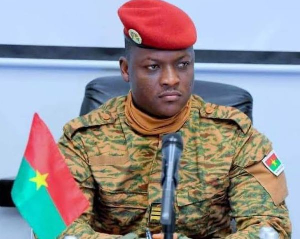Ghana’s social intervention programmes have been lauded in certain quarters but again proponents have maintained that government needs to ensure that it covers all the population.
Of all social intervention initiatives in the country, only the Livelihood Empowerment Against Poverty (LEAP) better reaches the people that they were set up to cater for, a study by the World Bank Country Officer has revealed.
The Ghana Improving Targeting of Social Programmes Report 2010 indicated that out of the several social intervention programmes such as the National Health Insurance Scheme, the National Youth Employment Scheme and their poverty related schemes, only LEAP covered more than 50 per cent of its targets, the poor.
President John Mahama told Parliament at his State of the Nation last Thursday that, he is committed to putting people first. “I have said that again and again over the last several years, but what does that really mean?How is that declaration affecting the lives of people in Bawku, Aflao, or Axim?
He also highlighted in his State of the Nation, that Government progressively expanded the Livelihood Empowerment Against Poverty(LEAP)programme from 1,640 beneficiary households in 2008, to 71,000 in January 2013.
As at November 2015, LEAP had been expanded to 144,980 beneficiary households. The cash grants have also been increased this year.This has helped beneficiaries to not only address their critical needs, but also to invest in income-generating ventures that supplement family finances. The President explained.
This was a major worry for many civil society organisations and development partners at the Multi Donor Budget Support Review Meeting that looked at how Ghana was performing in the implementation of the medium term development agenda.
After 59 years as an independent nation, government has lined up a Social Protection Policy (SPP) to address poverty, vulnerability and exclusion in the country.
If completed, the SPP will ensure the provision of essential social services to people irrespective of their socio-economic status.
The project, dubbed the Ghana Social Protection and Reverse Mission, organised by the World Bank in Washington DC, acknowledges that if social protection interventions were adequately designed and implemented, it would contribute to socio-economic development and also narrow the inequality gap in the country.
Minister for Employment, Haruna Idrisu also announced in Parliament that government has so far received 50,000 applications for the Youth Employment Module. Government has set a target of recruiting 100,000 personnel into the Youth Employment Module in 2016 and it is the hope that it will be implemented and not just be mere rhetorics.
Armando Barrientos, a visiting professor from the University of Manchester in the UK, has challenged government to invest about one percent of the Gross Domestic Product (GDP) into social interventions programmes in order for the country to attain universal social protection.
According to Professor Barrientos, 75 percent of countries worldwide spend between 1 and 2 percent on social protection; and emphasised it is important for government to have a framework that is “understood and agreed by everyone that responds to communities”.
“I think Ghana is taking significant strides forward in developing a comprehensive social protection system: there has been an expansion of the LEAP, NHIS so it’s a significant step forward, so let’s hope it continues to cover the population.”
Way Forward
Dr. Esther Ofei-Aboagye from the National Development Planning Commission (NDPC) has said that the country spends a little over 0.5 percent on social protection.
This, Professor Barrientos shares in that view and believes that: “I think one percent of GDP will be the next milestone. But it is not just a matter of money; rather, having the right policy framework,” he said.
According to her, if social protection interventions are adequately designed and implemented, they will contribute to socio-economic development and also narrow the country’s inequality gap.
She said it is important for the country to equip the human resources and invest in human capital in ways that will maximise the country’s resources.
“If we are able to bring those in poverty out and help them to be creative and innovative, it will ensure the future of this country. Again, as we aspire to middle-income status we can’t have a lower-income situation around our people. We should be able to guarantee them a certain basic minimum in terms of social services, opportunities for children; and also ensure the well-being of working people who want to work but cannot, and also that our older persons not suffering.”
Given that the country , according to Finance Minister Seth Terkper is on the verge of making economic turnaround, empowering the lives of the poor through these interventions can only uplift them to take up a skill or a trade which in turn boost the economy as a whole.
Business News of Sunday, 6 March 2016
Source: B&FT












